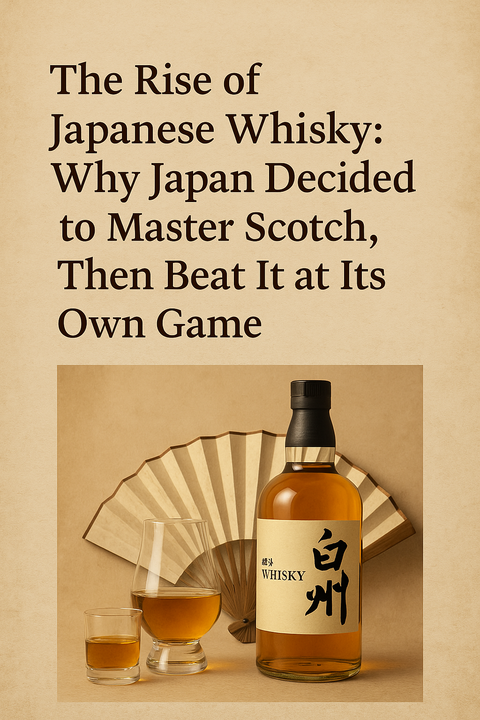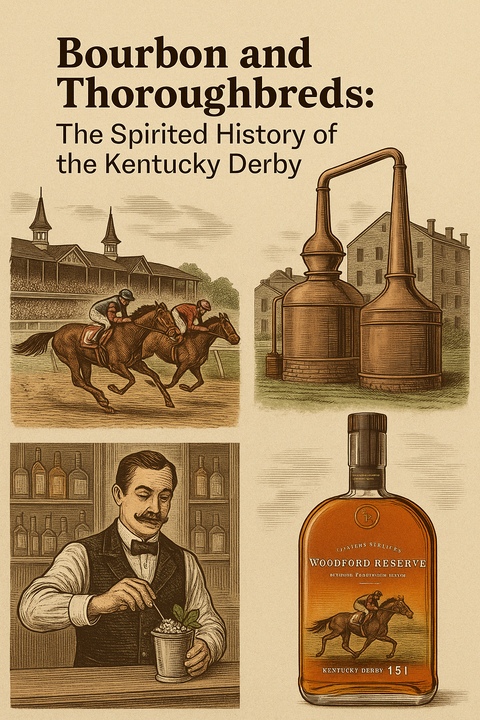Why Did Japan Start Making Whisky?
Because they could—and because they were watching. While the Scots were busy perfecting single malt and looking down their noses at anything that wasn’t made in the Highlands, Japan was quietly studying every move.
It started in the early 1900s. A young man named Masataka Taketsuru traveled from Japan to Scotland to study organic chemistry and ended up studying whisky like his life depended on it. He apprenticed at distilleries, married a Scottish woman, and brought his notebooks full of peat, pot stills, and fermentation secrets back to Japan. This guy wasn’t on vacation—he was on a mission.
Enter Shinjiro Torii, the founder of Suntory, who hired Taketsuru to help him create Japan’s first proper whisky distillery: Yamazaki, built in 1923 near Kyoto. The location wasn’t random. Torii chose a place with humidity, seasonal temperature swings, and pristine water. In other words, perfect whisky-aging conditions. Yes, the Japanese approach this like they do everything else: with obsessive precision and intentionality.
So Why Did It Catch On?
For a long time, it didn’t. Japanese whisky was mostly for the domestic market. It was smoother and more delicate than most Scotch—not exactly in line with the cigar-and-leather crowd. But then the global palate changed.
People started to appreciate nuance. Subtlety. Balance. And Japanese whisky? It had all. And just like that, international whisky lovers woke up and realized the best dram on their shelf might not come from Speyside but from a bottle of Hibiki, Nikka, or Chichibu.
In 2001, Nikka’s Yoichi 10-Year won “Best of the Best” from Whisky Magazine, and that’s when the world officially took notice. Since then, the awards haven’t stopped. Neither has the price inflation—but that’s a different blog.
What Makes Japanese Whisky Different?
-
Water & Environment: Japan’s soft water and wide-ranging seasons give whiskies unique aging conditions that aren’t easy to replicate elsewhere. The climate plays just as big a role as the barrels.
-
Precision: There’s no “good enough” here. From fermentation to bottling, Japanese distillers treat whisky more like watchmaking than winemaking. They’re blending masters, too—some distilleries even make dozens of spirit styles in one location just for the sake of blending them together.
-
Inspiration, Not Imitation: While heavily inspired by Scotch, Japanese whisky isn’t a copy. It’s a response. A cleaner, quieter, often more elegant response. And like a samurai duel, it’s all about who strikes with the better timing and finesse.
Why We Carry It at Arthur Cantina
Because Japanese whisky isn’t just trendy—it’s earned. These bottles are some of the most balanced and refined spirits in the shop. Whether you’re hunting down something rare like a Hakushu 18-Year or just want something easy-drinking like a Hatozaki Small Batch, we’ve got options.
Let the bourbon fans chase Pappy and the Scotch heads hoard Islay peat bombs. Meanwhile, you pour yourself a dram of Nikka and enjoy the fact that your whisky doesn’t need to yell to make a point.
Want to experience Japanese whisky the way it was meant to be appreciated? Come by Arthur Cantina. We’ll walk you through our top picks—and maybe even tell you which bottle is secretly better than that $300 trophy on your shelf.




Comments (0)
There are no comments for this article. Be the first one to leave a message!